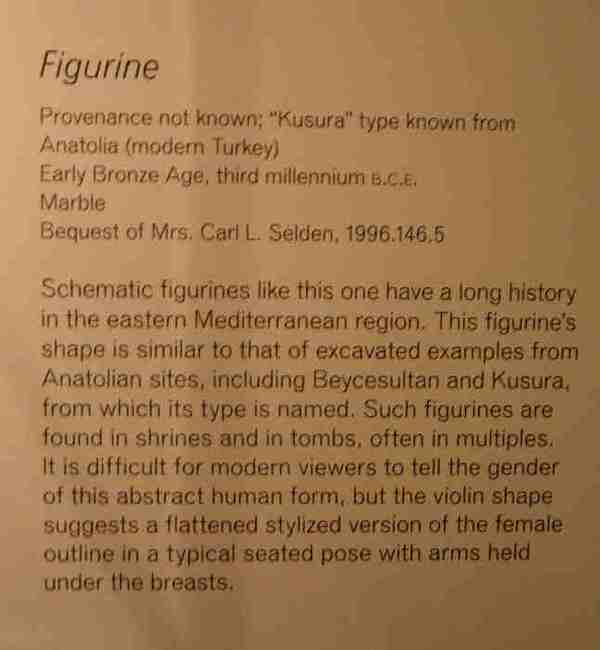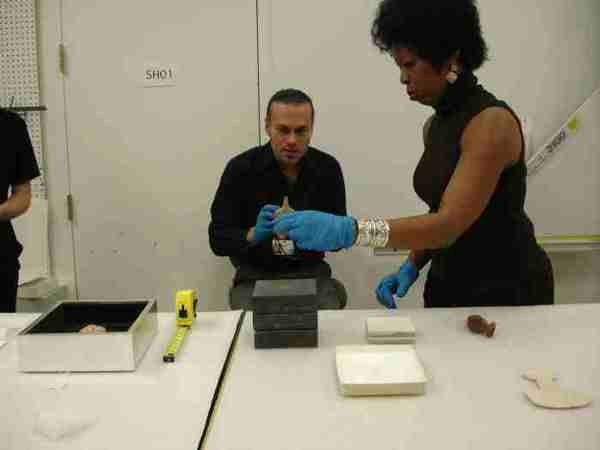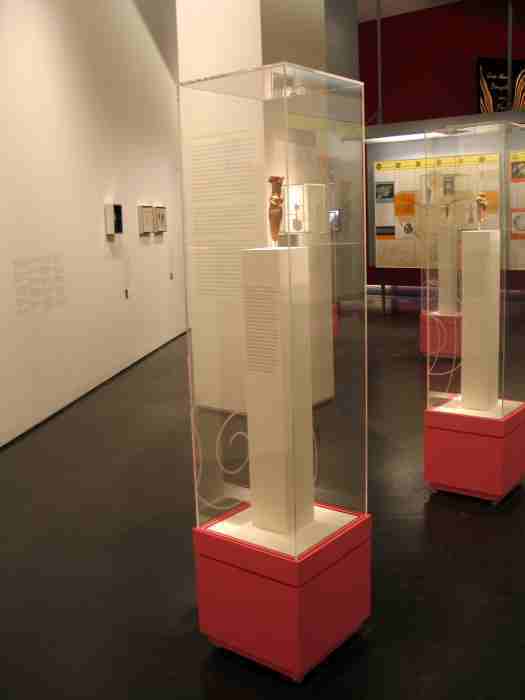The Fertile Goddess: Endings and Beginnings, Part III: Creation
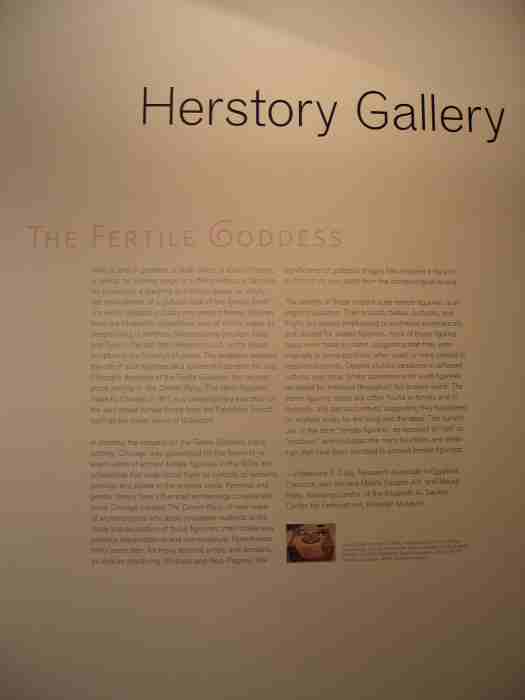
An installation view of The Fertile Goddess intro panel and title taken for archival purposes by our ECAMEA Curatorial Assistant, Kathy Zurek-Doule.
All this time, I had been researching each figurine type intensively in order to understand their original appearance, method of manufacture, and to find out what scholars thought their functions might be. This involved locating information about the provenance and archaeological context of scientifically excavated examples of each figurine type. All this is necessary to write didactic panels and labels that will answer viewers’ questions when they are confronted with the object in the gallery. Piles of books and articles, pages of notes, and countless hours are required to achieve a level of knowledge about the object that can then be reduced to less than a hundred words in the case of an individual label. What a visitor reads there is the product of months of collaboration and review by curators, editors, and our Interpretive Materials Manager, intended to make sure that the content is comprehensible, informative and useful.
What the polished and installed “chat” label for one of our figurines looks like up close.
By this time, we had also agreed upon our vision for the show: we wanted just a few stunning objects displayed in a jewel-box setting and, most importantly, in the round, so that the viewer could see them from every angle. This was crucial because museums so frequently display such ancient female figurines in groups, often literally with their backs against the case wall, and in conjunction with other objects from the cultures that made them. We wanted to make them the focus for a change; we also hoped to highlight the similarities and differences between types over time and geography by displaying them together, something that is seldom done.
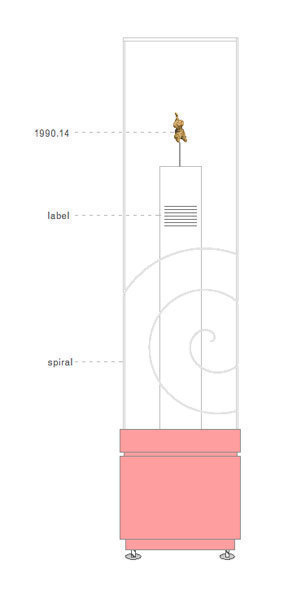
The beautiful casework mock up for The Fertile Goddess with our Halaf figure superimposed inside. Designed by Matthew Yokobosky, the Museum’s Chief Exhibitions Designer.
A major step in any exhibition is a so-called “mock-up;” a meeting between curators and designers in storage with the actual objects, when the layout of the cases and the placement of each object is determined. Based on decisions made there, special exhibition mounts are then made for each object and designs from which cases will be made are drawn up. Our Chief Exhibition Designer, Matthew Yokobosky, realized and even improved upon our vision beautifully. We were blown away by the cases he designed for the figurines; he surmounted the challenges of showcasing such small works at approximately eye level and including our label information, without letting either casework or text overwhelm them, with incomparable ingenuity. Matthew and Tomoko Nakano, Assistant Graphics Designer, also did an incredible job designing the graphics for the gallery, particularly the map, which posed its own set of challenges.
During the exhibition mock up, Matthew, photographed here with Barbara Duke, Art Handler, holding the Halaf figure, arrived at the “jewel-box” setting that we envisioned for what would become the sketch above.
Finally, during installation, our expert and very patient Art Handlers brought the objects to the gallery and placed them in their mounts within the cases, making endless adjustments at the request of curators, designer, and conservators to ensure their safety and make sure they looked their best. All around them, the final products of the hard work of so many on the Museum staff, wall panel didactics, labels and graphics like our map, were going up; until, at the very end, Matthew supervised the lighting for each object within each case in order to bring them all fully to life.
The finished product in the gallery. Check out more photographs of the installation here.
Maura and I originally wanted to have thirteen objects in the exhibition, but ended up with only twelve perfect pieces. I soon realized happily, however, that we would in fact have thirteen present in the gallery, as the thirteenth would be you, the visitor, who is, after all, the reason for every exhibition we present.
Interested in seeing more “goddesses” in the Collection? Browse the Museum’s ever growing Collection databank or just click here.
Want to learn more about the Ancient Egyptian “goddesses” in the Collection? Check out this group.

Madeleine Cody is a Research Associate for Egyptian, Classical, and Ancient Middle Eastern Art. She has a B.A. in Classical and Near Eastern Archaeology from Bryn Mawr College, an MA in Egyptology from Brown University, and is currently completing her Ph.D. in Egyptian and Ancient Near Eastern Art and Archaeology at the Institute of Fine Arts, New York University. She has worked on excavations in Italy, Yemen and Egypt. Since coming to the Museum in 1997, she has been involved with numerous projects and assisted the late James F. Romano, Project Director, with the second phase of the reinstallation of the Egyptian Galleries, which opened in 2003. With Jim and Richard A. Fazzini, she is a co-author of Art for Eternity: Masterworks from Ancient Egypt (Brooklyn, 1999) and has written about other Egyptian objects from the Museum’s collection. Currently, she is working with the ancient Middle Eastern Art collection, her other area of expertise. She is co-curator of the Herstory Gallery exhibition, The Fertile Goddess, (December 19, 2008 – May 31, 2009).

